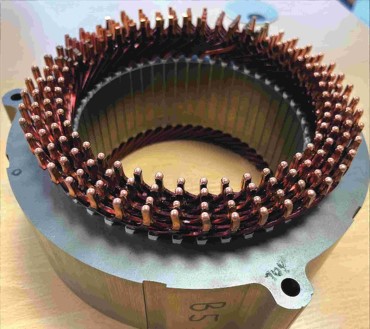Electron beams offer faster, more precise welding

(Image courtesy of CVE)
Cambridge Vacuum Engineering (CVE) is working with Ford on automating electron-beam welding, writes Nick Flaherty.
The EB-eDrive project will examine how to scale up electron-beam welding for joining copper and aluminium components in electric motors.
Ford Powertrain Manufacturing is working with CVE to find ways to reduce the time it takes to manufacture hairpin stators using electron-beam welding, which is faster and more precise than existing processes. Speeding up the welding of the stators could help increase the production of EVs.
Electron-beam welding is significantly faster than conventional laser-welding techniques, and it is already used in wind turbines and nuclear reactor motors.
The two companies have a scope of works, have drawn up preliminary designs and demonstrated some small samples of e-beam welding.
“The potential benefits that electron-beam welding can bring to the production of motor stators is huge. As well as looking to reduce manufacturing times, we will be seeing what we can do to improve the quality of hairpin welds to reduce the risk of electrical shortcuts and the production of non-functioning stators,” said Bob Nicolson, CEO of Aquasium Technology, the parent company of CVE.
Another CVE project, called EB-Bat, is a collaboration with Delta Cosworth and The Welding Institute (TWI) to design, build and test an electron-beam welding machine for battery busbar components. The CV EB welding equipment includes systems ranging from 50-200 kV with beam powers up to 100 kW.
The current system developed by CVE can weld three strips of metal up to 250 mm long with a combined width of 3 mm. It has a 60 kV beam with a power of 10 kW, and it can weld the metal strips together in groups of 30.
Click here to read the latest issue of E-Mobility Engineering.
ONLINE PARTNERS





















